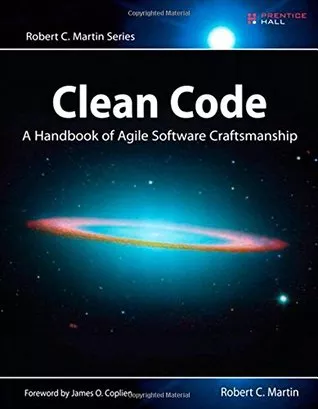Source: Chat-Gpt
Clean Code by Robert C. Martin, commonly referred to as "Uncle Bob," is a foundational book in software engineering. It provides principles, best practices, and examples for writing clean, readable, and maintainable code. The book emphasizes the importance of professionalism and craftsmanship in software development and is structured around practical examples, case studies, and advice.
Key Principles and Concepts:
- Meaningful Naming:
- Names should be descriptive and unambiguous, helping the reader understand the code's purpose.
- Avoid abbreviations and aim for clarity. For example, a variable name
accountBalanceis better thanaccBal. - Good names for variables, functions, and classes make the code self-explanatory.
- Functions:
- Functions should be small, perform a single task, and do it well.
- They should ideally be between 1-4 lines long, with each line of code contributing to the function's purpose.
- Avoid passing too many parameters; keep the number of arguments low to maintain readability and testability.
- Comments:
- Martin argues that comments are often a sign of bad code. Instead, write code that is self-explanatory so that comments aren’t necessary.
- When comments are used, they should clarify code rather than explain what is obvious.
- Favor clear naming and structure over extensive commenting, as comments can become outdated and misleading over time.
- Error Handling:
- Handle errors gracefully with clear and informative messages.
- Use exceptions instead of return codes and avoid unnecessary try-catch blocks.
- Keep error-handling code separate from the main logic to improve readability and reduce clutter.
- Formatting and Readability:
- Consistent formatting makes code easier to read and navigate.
- Group related code together, use meaningful whitespace, and maintain a logical flow within files.
- Use indentation, line breaks, and consistent naming conventions to make code visually appealing and easier to scan.
- Single Responsibility Principle (SRP):
- Each class, function, or module should have one reason to change, meaning it should have a single responsibility.
- This principle promotes separation of concerns, making it easier to understand, test, and modify code.
- DRY (Don’t Repeat Yourself):
- Avoid duplication by refactoring common functionality into functions or classes.
- Repeating code leads to inconsistencies and increases the effort required to make changes.
- Code Smells and Refactoring:
- Identifying "code smells" (indicators of deeper issues) is essential to maintaining clean code.
- Martin emphasizes continual refactoring as a practice to improve and maintain code quality.
- Common smells include large classes, long methods, and too many parameters. Addressing these issues keeps code simple and more maintainable.
- Unit Testing and Test-Driven Development (TDD):
- Tests are an integral part of clean code. Writing tests ensures code functionality and simplifies future modifications.
- Martin advocates for TDD, where tests are written before the code to ensure that every line of code has a purpose and is testable.
- Good tests are fast, independent, repeatable, and cover as many edge cases as possible.
- Continuous Improvement and Professionalism:
- Martin emphasizes that writing clean code is part of being a professional software developer.
- Software development is a continuous learning process. Improving and refining skills over time is essential.
- Strive to leave code better than you found it, and continuously seek ways to enhance the quality of the codebase.
Conclusion:
Clean Code is both a guide and a philosophy for software developers who seek to improve their craft. It underscores the importance of writing clear, concise, and maintainable code, while promoting a disciplined, methodical approach to coding. This book has become essential reading for developers at all levels, from beginners to experienced professionals, due to its focus on building software that is easy to understand, maintain, and evolve. By following the principles in Clean Code, developers can produce software that is not only functional but also a joy to work with.

